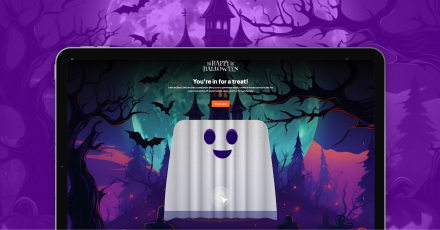How to motivate and reward employees is a key component to improving employee engagement and satisfaction. If your organization has tried a variety of incentives but is still not seeing the results you’d like, it might be time to rethink the employee engagement activities and programs you use.
Keeping employees engaged with your organization’s vision while encouraging them to learn and grow is essential for morale and employee productivity. Research consistently shows (as you’ll see below) that being challenged in the workplace is something employees, particularly Millennials, say they want and need. Employee engagement strategies that fail to meet these demands can result in decreased ambition and high turnover.
In this piece, we’re sharing 11 employee engagement and employee motivation statistics that illustrate how important improving these components of the employee experience is. We also give suggestions for effective employee engagement programs, such as gamification, to improve the performance and satisfaction of your organization across the board.
Love numbers? Here we go!
1. 85% of employees are not engaged in the workplace, and 81% of them are considering leaving their jobs.
According to Gallup’s State of the Global Workplace report, engaged employees are those who are “involved in, enthusiastic about, and committed to their work and workplace.” Yet, sadly, on average, only 15 percent of global employees report being fully engaged at work. This means a vast majority are either fairly engaged, doing the bare minimum, or view their workplace negatively. Though the numbers differ from country to country—33 percent of U.S. employees report being engaged while a dismal 8 percent in the U.K. say they are—the report gives plenty of reasons to be concerned.
With a separate report showing over 80 percent of employees would consider leaving their jobs for the right offer, it’s clear to improve satisfaction scores, employers must improve their engagement and motivation strategies. Employees say that building better relationships with their co-workers is one of the key things that help them feel happier at work. There are many ways to do this, but solutions that focus on helping others succeed, like gamification, have proven highly effective.
2. Low employee engagement costs organizations up to $500 billion annually.
Employees who “quit without quitting” have the power to destroy business growth no matter what the industry. Disengaged employees are less responsible and exhibit poor behaviors and attitudes that drain overall productivity. To overcome this, organizations must focus on:
- Encouraging employees to become more personally involved.
- Helping employees connect their job tasks to the company’s missions.
- Providing recognition.
- Encouraging collaboration.
Technology can help through the use of tools such as gamification software that monitors and maintains personal engagement.
3. Highly engaged employees and teams increase profitability by more than 20%.
Gallup found that employee engagement is not an abstract feeling but a concrete behavior. When organizations make employee engagement central to their overall business strategy, they create a culture where employees want to thrive, and absenteeism and turnover rates decrease. To get there, provide employees with clear expectations and the tools they need to do their best work.
4. Engaged employees are 44% more productive than workers who merely feel satisfied.
Satisfaction may be a good feeling, but if employees aren’t also highly engaged, they won’t be as productive. What encourages higher engagement? Things like ongoing feedback, a clearly stated purpose, and a deep interest in employee well-being are a few.
5. Employees who feel heard are nearly 5 times more likely to feel empowered to do their best work.
A Salesforce report found that although feedback and recognition are important, they’re not enough. Today’s employees expect communication to be a two-way street where they are equally heard and valued. When employees feel they’re an integral part of the company’s success, they’re far more likely to want to engage in efforts that help the organization reach its goals.
6. 61% of employees report being burned out on the job.
Workplace stress leads to multiple issues that can decrease employee motivation and engagement. With nearly a third of those surveyed reporting extremely high levels of workplace stress, employers must find ways to emphasize the connection between mental and physical health and engagement. Holistic approaches like workshops and group activities such as gamification can produce a healthier, more engaged, and more productive workforce.
7. Employees who trust their managers are more motivated.
Trust in leadership is linked to an employee’s intention to stay, compliance with strategic decisions, and productivity. Those who trust their managers also exhibit an increased desire to protect and promote the well-being of their co-workers. This “pro-social motivation” and team-inclusive culture helps employees thrive, which increases satisfaction and engagement.
8. High employee engagement and satisfaction can lead to nearly 90% greater customer satisfaction.
They can also increase customer loyalty by up to 50 percent. Experts have found that organizations that invest in employee motivation and engagement follow a winning strategy. High engagement unlocks opportunities for meaningful employee performance, which, in turn, promotes a higher level of satisfaction.
9. Nearly 90% of workers whose employers support well-being initiatives are more likely to recommend their organization as a good place to work.
There’s a direct correlation between employee well-being and job satisfaction. One of the most important facts to come out of recent studies is that employee well-being is rarely addressed through what experts call “silo programs.” Instead, an inclusive and collaborative culture and climate lead to satisfaction and engagement.
10. 87% of employees expect their employer to support them in a work-life balance.
Employee well-being (and satisfaction) goes far beyond traditional health measures. Flexible work schedules, encouraging the use of vacation time, and an acknowledgment of and adaptation to individual employee non-work-related circumstances represent a significant shift in workplace practices, but these and other changes will only grow stronger as time goes by. Organizations choosing to protect their most valuable asset, their people, can be rewarded with happier employees who are more highly engaged.
11. Almost 90% of employees feel they’d be more productive if their employer introduced employee motivation activities such as gamification.
Surveys show employees love gamification, with 97 percent of those aged 45 and above saying it would help improve their work, 87 percent saying it makes them more productive, and 85 percent reporting they’d spend more time on gamified software. Unfortunately, many in management continue to see gamification as a distraction that would undermine productivity. As we can see, the numbers tell another story.
Gamification at Work
You’d better get started with gamification in the workplace.
We hope these engagement statistics and employee motivation statistics have given you valuable insight into how employee collaboration, group activities, and tech tools such as gamification software can help your organization increase employee engagement, motivation, and satisfaction.
About BeeLiked
BeeLiked understands how important employee satisfaction can be to any organization’s bottom line. To help you improve employee engagement and motivation, we offer a full range of customizable gamification solutions designed to empower employees and recognize them for the behaviors and values they bring to the workplace. Get in touch with us online today to set up a no-obligation discovery call and to learn more.



















